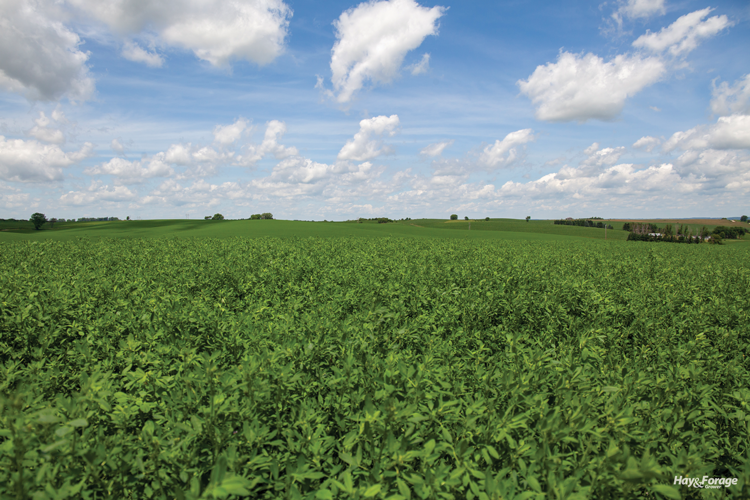
If Jo Heuschele has anything to do with it, alfalfa might soon find a new role as a nutritious human food ingredient. Her Alfalfa Checkoff project titled, “Alfalfa Value-Added Characteristics: Screening Cultivars for Biochemical Compounds,” explored alfalfa’s potential as a source of essential vitamins, minerals, and nutrients for humans.
“I’ve always been interested in plant-based food,” said Heuschele. “As a child, my family foraged for wild plants. My relatives always said these plants were nutritious, but specific information on nutritive values was limited and still is. If alfalfa or any plant is to be utilized as human food, then that plant needs to be assessed for nutritive and antinutritive potential.”
The research is part of an ongoing effort to better understand the nutritional value of plant-based foods and their applicability to human diets. Before alfalfa can be used as a human food source, a thorough analysis to assess both its nutritional value and any potential antinutrients that could pose a risk to health is needed.
The objectives of this project were to measure nutrient profiles from three commercial alfalfa cultivars and two soybean cultivars to compare value-
added characteristics that would affect future market potential and screen 50 lines for two value-added traits important to either current or future market potential.

“In this study, we assessed alfalfa for human essential vitamins, mineral content, and antinutrients,” Heuschele said. “We compared three cultivars with fall dormancy 4.5 at late bud stage and soybean forage and meal for traditional dietary fibers, crude protein, total fatty acids, vitamins A, C, E, B1-12, phytoestrogens, saponins, and isoflavones. We found alfalfa contains higher levels of vitamins B9, B12, and K than soybean meal.”
The USDA-ARS scientist then screened 50 genetically diverse alfalfa lines for the same compounds and saponins to determine plant variability. The vitamins had genetic variability, while the saponins did not, meaning alfalfa can be bred for higher vitamin levels, but reducing saponins will be a challenge.
A fortifying ingredient
The key takeaway for farmers is alfalfa has the potential to become a nutritious human food ingredient. Although farmers may not directly benefit from this research in the short term, the findings open the door for food processing industries to explore alfalfa as a fortifying ingredient. Alfalfa could be used to enrich processed foods with vitamins such as K, B9, and B12. As consumer interest in plant-based foods grows, there may be an increased demand for alfalfa.
One of the biggest challenges Heuschele faced was navigating the gap between applied research, which directly benefits farmers, and basic research, which seeks to understand biological processes. Research that falls between these two categories often struggles to attract funding or interest — a crucial issue for those aiming to transition new ideas into practical applications.
A surprising finding was the low variability in saponin levels among the alfalfa lines. “Saponins are of particular concern to livestock farmers,” Heuschele noted. “They can negatively impact fiber digestion and contribute to bloat when alfalfa is used as feed. Our study found higher levels of saponins in soybean herbage, challenging the assumption that alfalfa is inherently problematic in this regard.”
Looking ahead, Heuschele is collaborating with animal scientists on formulating feeds for chickens and pigs using alfalfa as a primary ingredient and food scientists on fortifying processed food products with alfalfa to boost their nutrient content. With further research and development, alfalfa could emerge as an innovative ingredient in both animal feed and human food.
While alfalfa’s potential as a food ingredient is still in its infancy, its rich nutrient profile suggests it could play a significant role in fortifying diets with essential vitamins. With continued research, alfalfa could transition from a traditional animal feed to a valuable human food source. A full copy of the report can be found at: https://alfalfa.org.
This article appeared in the March 2025 issue of Hay & Forage Grower on pages 22-23.
Not a subscriber?Click to get the print magazine.
